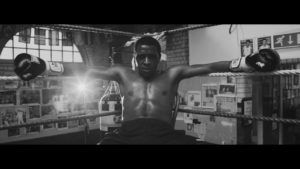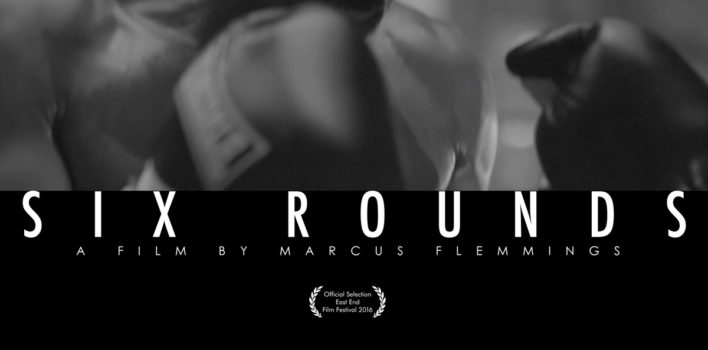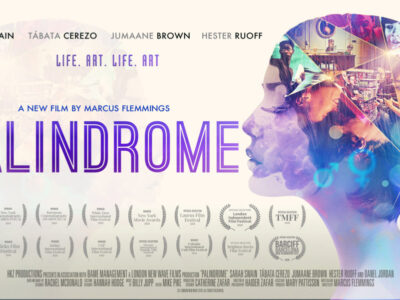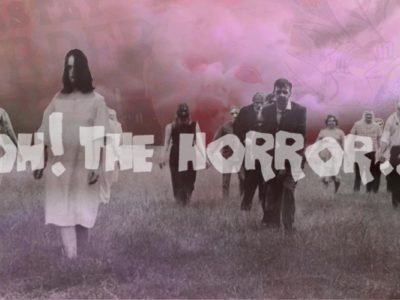Review| Six Rounds (2017)
London, England. 2011.
Between 6th and 11th of August thousands of people rioted in several London boroughs.
Resulting in 5 deaths.
The uprising was sparked on August 4th, by the fatal shooting of black 29 year old, Mark Duggan.
He was shot twice by a London Metropolitan Police officer.
He was unarmed.
 And with these opening titles, Marcus Flemmings’ 2017 film, Six Rounds, shuttles its audience into a wider world that existed prior to the 2012 shooting of Trayvon Martin in Florida and the subsequent (and continual) racial unrest in America that followed the death of Mike Brown in Ferguson, Missouri in 2014. I say wider world, because Americans tend to be myopic when it comes to looking at the global components of systemic issues like racism. Mark Duggan was a young black man who was shot by the police while unarmed in London. Before “unarmed black man killed by police officer” became the repeated mantra of news headlines on our own shores, the 2011 riots represented a harbinger of things to come for those countries whose hands dripped red with the broken flesh of African slaves.
And with these opening titles, Marcus Flemmings’ 2017 film, Six Rounds, shuttles its audience into a wider world that existed prior to the 2012 shooting of Trayvon Martin in Florida and the subsequent (and continual) racial unrest in America that followed the death of Mike Brown in Ferguson, Missouri in 2014. I say wider world, because Americans tend to be myopic when it comes to looking at the global components of systemic issues like racism. Mark Duggan was a young black man who was shot by the police while unarmed in London. Before “unarmed black man killed by police officer” became the repeated mantra of news headlines on our own shores, the 2011 riots represented a harbinger of things to come for those countries whose hands dripped red with the broken flesh of African slaves.
The framing device of the film divides the 55-minute film into six acts that tell the story of a black man by the name of Stally (played by an understated Adam J. Bernard) who is maneuvering his life outside of being a boxer, his relationship with Andrea, his white girlfriend, and trying to get his friend, Chris, out of trouble with his ex-manager. The first round shows Stally handily beating up his faceless white opponent, ultimately bringing him to his knees. The film cuts to Stally outside of the ring where his relationship seems to be idyllic and he seems content having given up boxing to pursue a regular work-a-day job.
However, with the introduction of his friend, Chris, and his potential demise at the hands of George, his ex-boxing manager, the story soon begins its descent. As circumstances begin to unravel Stally’s life and relationships, we see its analogical parallel taking place at the beginning of each act of the film with the give and take of the boxing match that bobs and weaves its way around the narrative.
 It is this parallel of the story and the boxing match that give the film its conceptual and narrative heft. With each round of the match shown, the opponent morphs from anonymous white man obscured by a camera that only seems truly interested in Stally to a potentially dangerous, known white man, giving the threat in the ring a face, a name and a personal history with our protagonist. Something the film’s narrative has prepared us for by the sixth round. This visual parallel is able to get at the focus of the film and where it ties back into the story of Mark Duggan: this is a white man’s world. Either throw the fight or pay the consequences, socially, economically or, in the case of Duggan, Martin or Brown, physically.
It is this parallel of the story and the boxing match that give the film its conceptual and narrative heft. With each round of the match shown, the opponent morphs from anonymous white man obscured by a camera that only seems truly interested in Stally to a potentially dangerous, known white man, giving the threat in the ring a face, a name and a personal history with our protagonist. Something the film’s narrative has prepared us for by the sixth round. This visual parallel is able to get at the focus of the film and where it ties back into the story of Mark Duggan: this is a white man’s world. Either throw the fight or pay the consequences, socially, economically or, in the case of Duggan, Martin or Brown, physically.
The visual style of Haider Zafar, the film’s cinematographer–with the film’s alternation between black and white and color as a means of delineating the match and the story leading up to the match–is effectively done. At times, the artistic and acting choices border on the best of arthouse cinema between monologues that tease the trespass of the fourth wall and camera angles and foci that call to mind films like Upstream Color and Another Earth in their ethereal quality.
The cost of taking these more experimental approaches to telling the story is the chance of not landing every punch. For most of Six Rounds’ runtime, the cinematic choices play seamlessly into the commentary and the emotional movement of the film. There is one particular scene that focuses solely on Andrea up against a starry sky that feels so incredibly out of place within the look and feel of the film and dialogue that felt so contrived that it nearly jarred me out of the emotional heft of the story up to that point. It was a really the only part of the film that truly seemed like a misstep in direction and writing. The film, however, recovered its pacing, natural dialogue and consistent cinematography quickly afterwards so that it was not difficult to fall back into the tension of the story.
 What Six Rounds ultimately succeeds in accomplishing by the time its credits roll is a fitting analogy for the black experience which transcends the American headlines into the wider world. With a system that plays to the favor of those in the majority and those in power, it isn’t hard to see how the whole fight could be rigged against the marginalized minorities of the world, the Mark Duggans, the Michael Browns and the Stallys of the world. Stally’s final round in the film feels like the reality of life for blacks in this world. That, by itself, should be credited to the smart direction of Flemmings and the stellar acting of Adam J. Bernard. Six Rounds finds a way to aim for the gut over and over again until the audience has let down their guard and goes in for the knockout…and nearly succeeds.
What Six Rounds ultimately succeeds in accomplishing by the time its credits roll is a fitting analogy for the black experience which transcends the American headlines into the wider world. With a system that plays to the favor of those in the majority and those in power, it isn’t hard to see how the whole fight could be rigged against the marginalized minorities of the world, the Mark Duggans, the Michael Browns and the Stallys of the world. Stally’s final round in the film feels like the reality of life for blacks in this world. That, by itself, should be credited to the smart direction of Flemmings and the stellar acting of Adam J. Bernard. Six Rounds finds a way to aim for the gut over and over again until the audience has let down their guard and goes in for the knockout…and nearly succeeds.







